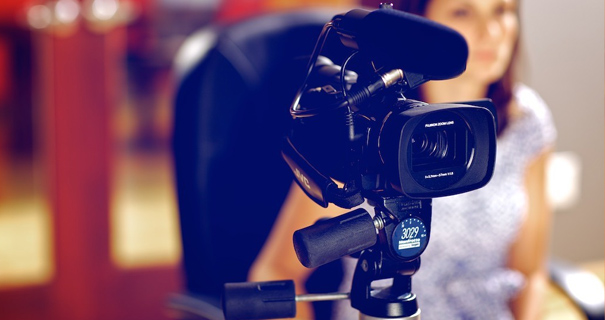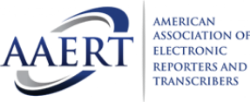Legal Videography: A Crucial Element in Building Strong Legal Cases
Legal Videography: A Crucial Element in Building Strong Legal Cases
Blog Article
Why Lawful Videography Is Vital for Accurate Court Recordings
The role of legal videography in courtroom settings can not be overstated, as it works as a crucial device for protecting the honesty of court documents. By catching both verbal and non-verbal interaction, it improves the clearness of witness statements and reflects the subtleties of court communications. This extensive paperwork not just help in minimizing possible misconceptions however likewise supports appellate reviews, consequently strengthening the judicial process. The ramifications of incorporating lawful videography into common court room methods elevate vital inquiries regarding its wider influence on the lawful system. What might these implications require?
Value of Visual Evidence
In the realm of lawful procedures, the significance of visual proof can not be overstated. Visual evidence acts as a powerful device in developing truths, corroborating testaments, and improving the overall clarity of a situation. This kind of proof, which includes photographs, videos, and diagrams, can provide a concrete context that spoken descriptions usually do not have, therefore offering courts and courts a clearer understanding of the conditions surrounding a situation.
Additionally, visual evidence aids in the retention of info. Human cognition is inherently aesthetic, and people are more probable to remember and comprehend information presented in an aesthetic style. In the court, this can be essential, as engaging visual evidence can sway viewpoints and reinforce the story presented by lawful representatives.
Additionally, using visual evidence can decrease misconceptions and uncertainties that commonly develop from verbal exchanges. By offering a straight depiction of events, visual evidence aids to remove subjective analyses and promotes a more objective exam of the realities. As a result, the integration of aesthetic proof into legal proceedings not just enhances the stability of the judicial process however additionally boosts the possibility of accomplishing a simply result.
Capturing Non-Verbal Hints
Using advanced videography methods can substantially enhance the capture of non-verbal hints throughout lawful proceedings. Non-verbal interaction, including facial expressions, body movement, and eye get in touch with, plays a crucial role in conveying feelings and purposes that may not be clearly specified in spoken testimony. legal videography. Legal videography utilizes high-def video cameras and calculated angles to ensure that these refined hints are tape-recorded with clearness and accuracy
The capacity to evaluate non-verbal habits can offer valuable context to declarations made during court sessions. A witness's unwillingness or self-confidence can be analyzed with their pose or motions, potentially influencing the court's assumption of trustworthiness. The usage of close-up shots can help focus on a speaker's expressions, enabling for a more nuanced understanding of the statement.
In addition, incorporating numerous electronic camera angles can create an extensive sight of communications, highlighting dynamics between parties included. This multifaceted approach not just boosts the precision of the court document yet likewise help in protecting the integrity of the judicial procedure - legal videography. Ultimately, recording non-verbal hints with lawful videography promotes a richer, much more full representation of court process

Enhancing Testament Integrity
The integrity of testimony can be dramatically boosted via the usage of top quality legal videography. Video clip recordings work as an unbiased medium that records not only the spoken words of witnesses but also the subtleties of their shipment, consisting of tone, pacing, and emotional expressiveness. This multifaceted documents gives a more clear understanding of the witness's reliability and intentions, which can be essential in lawful process.
Additionally, lawful videography lessens the capacity for misconceptions that may occur from composed records alone. get more When jurors can observe a witness's attitude and body movement combined with their testament, they are better equipped to analyze the authenticity and reliability of the proof presented. This visual context can reinforce the testimonial story, making it much more compelling and credible.
Furthermore, the presence of a video recording can prevent potential variances in statement. Witnesses may be a lot more careful in their declarations when they understand they are being tape-recorded, causing even more precise and honest accounts. In general, high-grade lawful videography enhances the honesty of statement, making sure that the court has access to a complete and honest representation of the truths as communicated by the witnesses.
Supporting Appeals and Reviews
Lawful videography plays an important duty in sustaining allures and reviews by supplying a thorough aesthetic document of courtroom procedures. This visual documentation catches not only the spoken words of witnesses and more lawyers however also the subtleties of body movement, tone of voice, and courtroom dynamics. Such aspects can be pivotal in comprehending the context of testaments and disagreements presented.
In the appellate process, where the focus gets on mistakes of law and procedural fairness, a video document can act as a crucial tool for appellate courts. It allows courts to assess the original test context, making certain that decisions are based on a full understanding of the procedures. The capacity to aesthetically examine the behavior of witnesses or the interactions between celebrations can reveal insights that created records may overlook.

Additionally, legal videography can aid in making clear uncertainties in testimonies or step-by-step judgments, thus strengthening the basis for an appeal. By providing a trustworthy, objective account of what transpired in court, lawful videography not only supports the integrity of the lawful procedure yet also equips all events included to make informed decisions regarding their instances.
Improving Courtroom Processes
Enhancing court efficiency, legal videography improves procedures by giving instant access to visual records of proceedings. This innovation enables judges, lawyers, and courts to take another look at crucial testament and evidence, making certain that all events have a clear understanding of the instance. By capturing the nuances of spoken and non-verbal communication, videography enhances the record, making it simpler to comprehend the context and weight of testimonies.

Additionally, video clip recordings can help with remote engagement in hearings, enabling higher adaptability in organizing and involvement, which is especially valuable in complex situations including numerous stakeholders.
Final Thought
In conclusion, lawful videography plays an important duty in ensuring exact court recordings by providing essential visual evidence that catches both spoken and non-verbal communication. This method enhances the dependability of testaments, sustains appellate reviews, and streamlines court room procedures. By fostering a detailed understanding of courtroom characteristics, legal videography ultimately contributes to a lot more equitable judicial results, enhancing the integrity of the legal system and assisting in notified decision-making.
Report this page